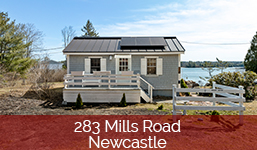Waldoboro’s shipbuilding heritage was being reborn after a period of years.
Working at the Waldoboro shipyards during these “Great Days” was an under publicized group of men who understood fully the availability of timber and how to procure it. This timber was arriving weekly by water and, after 1872, by rail in prodigious amounts.
Purchasing was accomplished carefully through dealers and agents many miles away. Extensive storage facilities would be involved. These buyers had long understood that certain trees and certain parts of trees were best for certain parts of ships. The natural curves and joints created more strength than two pieces bolted together, and were preferred as often as possible – knees being the best examples in the structural woods.
Lincoln County News – Nov. 27, 1874 – “Launched Monday by William Fish the barkentine Fred Eugene, 469 tons; overall length 142 feet; frame of white oak; hard pine floor and planking four inches thick; lower deck beams of hard pine; decks of white pine; 1500 locust treenails.”
Up to approximately 1850 the nearby woods to Waldoboro and the Eastern United States in general – could supply most of what was needed in the way of wood. By the 1870s, that seemingly inexhaustible supply was beginning to falter. By then men like the Storer family and the Clarks and Kennedys were looking elsewhere for the bargains.
December 1888 – “Cost of the Levitt Storer 5 masted schooner Gov. Ames was $75,000. She was built from 460 cubic tons of Virginia white oak, and 876,000 feet of Georgia hard pine. Her five masts – foremast, main mast, mizzen mast, jigger mast and spanker mast are fashioned from Oregon pine.”
In addition to the structural woods – such as oak and hard pine – builders had to think of the beautiful decorative woods used primarily to show off the particularly skilled joiner crew such as Mr. G.O. Waltz, whose shop sat on the eastern side of the upper Medomak River.
October 8, 1877 – “Launched by Edwin O. Clark – Ship Mabel Clark; her spacious 50 foot cabin displays the following woods: mahogany, black walnut, Birdseye maple, California laurel, mountain ash, satinwood, and California cottonwood.”
October 1901 – “The main cabin of the Baker Palmer is similar to that of the Fannie Palmer and affords as fine accommodations as any merchant ship afloat being finished in oak, mahogany, and cherry. This work shows the workmanship of our townsman, Mr. G.O. Waltz.”
The following lists offer the reader an idea of the many woods used in the building of wooden ships. Needless to say, the great race between man and the seemingly endless supply of giant timber was not to be won by the trees.
Structural woods – Eastern U.S.; later Southern states
Chestnut (minimal use); fir or balsam (minimal); Hackmatack or juniper (knees); Live oak (great, but used up by the 1850s); White oak (premier choice); hard pine (secondary to white oak); Norway pine (used in decking); Pitch pine (keelsons and decking); Southern pine and yellow pine (common names for all pines); Sweet gum (scorned by many); Teak (excellent but had to be imported from Asia); Locust – or black locust (treenails).
Decorative woods – Many from outside the U.S.
Ash (interior); Cherry (from Eastern U.S.); Mahogany (African); Bird’s Eye Maple – Sugar (relatively scarce); Rosewood (Brazil, Honduras, India, Madagascar) – most popular ; Satinwood (Brazil, East Indies, West Indies – second most popular); Black Walnut (Eastern U.S., rare); Zebrawood (African).
Functional woods
White ssh (Eastern U.S.) blocks, ships’ boats; White Ash (soft) ships’ boats; Lignum vitae – deadeyes
(Sources – The Lincoln County News; “The American Built Clipper Ship” – William Crothers)






